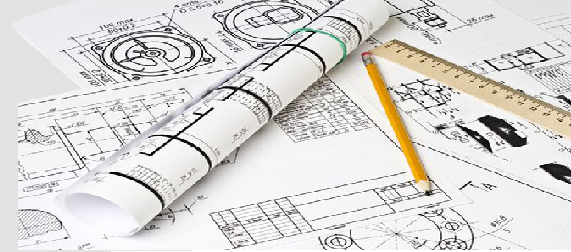Mass transfer modelling of the extraction of antibiotics from aqueous solution using Biosurfactants
Imane KERZANE, Mabrouk HAMDACHE, Asmaa BOULHELKHAL, Othmane BENKORTBI
Abstract
The objective of this work is to modelling a new separation technique based on the removal of antibiotics such as amoxicillin and ampicillin produced by antibiotical company Saidal Médéa (Algeria) from pharmaceutical effluents using biosurfactants and commercial surfactants.
The kinetic distribution of amoxicillin and ampicillin between the two phases was modelled in order to well understand the mechanism governing the direct transfer of antibiotics from the aqueous phase to the micellar phase. The results were interpreted in terms of a two-film theory for flat interface.
The model of the kinetic transfer developed in this study provides excellent predictions. A very good correlation between predicted and experimental values was found : R2 = 0.98 for the sorption onto biosurfactant and R2 = 0.99 onto a synthetic surfactant. The model coefficients were used to estimate the overall combined mass transfer coefficient and the individual mass transfer coefficients.
Keywords
References
[1] I. Braschi, S. Blasioli, L. Gigli, C. E. Gessaa, A. Albertib, and A. Martucci, “Removal of sulfonamide antibiotics from water: Evidence of adsorption into an organophilic zeolite Y by its structural modifications”, J Hazard Mater, vol. 178, pp. 218-225, 2010.
[2] G. Moussavi, A. Alahabadi, K. Yaghmaeian, and M. Eskandari, “Preparation, characterization and adsorption potential of the NH4Cl-induced activated carbon for the removal of amoxicillin antibiotic from water”, Chem. Eng. J, vol. 217, pp. 119-128, 2013.
[3] J.H.O.S. Pereira, A.C. Reis, V. Homem, J.A. Silva, A. Alves, M. T. Borges, R.A.R. Boaventura, V.J.P. Vilar, and O.C. Nunes, “Solar photocatalytic oxidation of recalcitrant natural metabolic by-products of amoxicillin biodegradation”, Water Res., vol. 65, pp. 307-320, 2014.
[4] S.X. Zha, Y. Zhou, X. Jin, and Z. Chen, “The removal of amoxicillin from wastewater using organobentonite”, J. Environ. Manage., vol. 129, pp. 569-576,2013.
[5] J. R. Domínguez, T. González, P. Palo, and E. M. Cuerda-Correa, “Removal of common pharmaceuticals present in surface waters by Amberlite XAD-7 acrylic-ester-resin: Influence of pH and presence of other drugs”, Desalination, vol. 269 , pp. 231-238, 2011.
[6] A.J. Watkinson, E.J. Murby, D.W. Kolpin, and S.D. Costanzo, “The occurrence of antibiotics in an urban watershed: From wastewater to drinking water”, Sci.total. Environ., vol. 407, pp. 2711-2723, 2009.
[7] A L. Batt, S. Kim, and D S. Aga, “Comparison of the occurrence of antibiotics in four full-scale wastewater treatment plants with varying designs and operations”, Chemosphere, vol. 68, pp. 428-435, 2007.
[8] T. Polubesova, D. Zadaka, L. Groisman, and S. Nir, “Water remediation by micelle–clay system: Case study for tetracycline and sulfonamide antibiotics”, Water Res., vol. 40, pp. 2369-2374,2006.
[9] X. Weng, S. Lin, Y. Zhong, and Z. Chen, “Chitosan stabilized bimetallic Fe/Ni nanoparticles used to remove mixed contaminants-amoxicillin and Cd (II) from aqueous solutions”, Chem. Eng. J., vol. 229, pp. 27-34, 2013.
[10] A. Fakhri and S. Adami, “Adsorption and thermodynamic study of cephalosporins antibiotics from aqueous solution onto Mgo nanoparticles”, J. Taiwan. Inst. Chem. Eng., vol. 45, pp. 1001-1006, 2014.
[11] S. Chauhan, M.S. Chauhan, D. Kaushal, V.K. Syal, and J. Jyoyi, “Study of micellar behav-ior of SDS and CTAB in aqueous media containing furosemide-A cardiovasculardrug”, J. Solution Chem., vol. 39, pp. 622-638, 2010.
[12] A. Boukhelkhal, O. Benkortbi, M. Hamadeche, S. Hanini, and A. Amrane, “Removal of Amoxicillin Antibiotic from Aqueous Solution Using an Anionic Surfactant”, Water Air Soil Pollut., pp. 226-323, 2015.
[13] S.H Mohd-Setapar., H. Mat, and S. N. Mohamad-Aziz, “Kinetic study of antibiotic by reverse micelle extraction technique”, J. Taiwan. Inst. Chem. Eng., vol. 43, , pp. 685–696, 2012.

